Rambutan, an exotic fruit native to Southeast Asia, has gained popularity worldwide for its unique appearance and delicious taste. Resembling a hairy lychee, this tropical, spiky fruit boasts a juicy, sweet flavor that appeals to many fruit lovers. Although rambutan may look a bit intimidating at first due to its spiky exterior, learning how to eat it is quite simple and opens up a world of culinary possibilities.
Jump to Section
What is Spiky Fruit?
Spiky fruits, known for their unique appearance and often underrated flavors, have been gaining popularity in recent years. These exotic fruits, covered in a range of spikes, thorns, and protrusions, can seem intimidating at first, but once their exterior is carefully navigated, they reveal a delightful and often exotic taste. A variety of spiky fruits can be found across the globe, each with different characteristics, flavors, and nutritional benefits.
One noteworthy spiky fruit is the rambutan, native to Southeast Asia and easily recognizable by its hairy, red, and green exterior.
What is Rambutan Fruit?
Rambutan is a tropical, pink fruit that comes from the Nephelium lappaceum tree. This tree belongs to the Sapindaceae family, also known as the soapberry family. The fruit itself is native to Southeast Asia, primarily in countries such as Malaysia and Indonesia, where it thrives in tropical climates.
The rambutan fruit is quite distinctive due to its unique appearance. It is oval or round in shape, covered in hair-like spines. These spines are green when the fruit is freshly picked and turn black as the fruit ripens. The fruit's skin can vary in color from red, orange, to yellow. Inside, the rambutan has a juicy, sweet, and somewhat translucent white flesh, which is usually eaten fresh. A large, inedible seed lies at the center of the fruit.
Being a tropical fruit, rambutan is well-adapted to grow in regions with high humidity and temperatures. It flourishes in well-drained, deep, and fertile soil, making it an ideal crop for various Southeast Asian countries. Besides Malaysia and Indonesia, rambutan is also cultivated in countries like Thailand, the Philippines, and Vietnam as well as in Central America for export into the United States. .
Rambutan is a nutritious fruit, rich in essential nutrients like vitamin C, copper, and manganese. It is a popular ingredient in various dishes, desserts, and beverages in Southeast Asian cuisine. The fruit is often consumed fresh or used as an ingredient to add a distinct, sweet, and tropical flavor to a variety of dishes. Its unique appearance and delightful taste have made rambutan a beloved fruit throughout the region and beyond.
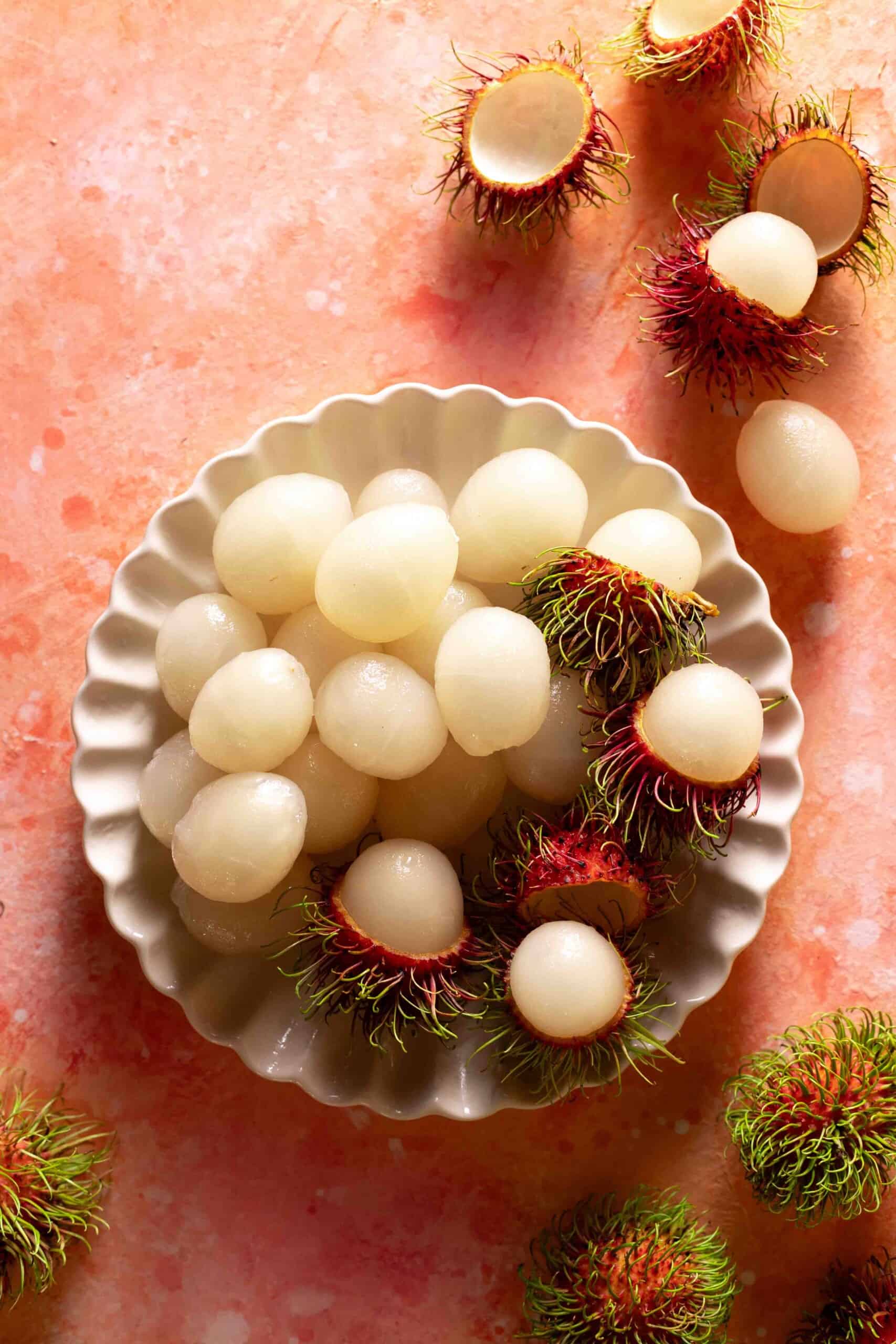
What does Rambutan Taste Like?
Rambutan is juicy and refreshing tender flesh and a sweet and creamy taste, often compared to dragon fruit. When ripe, the fruit has a sweet, honey-like taste with notes of berries, citrus, and lime. It is much sweeter than other fruits like apples or strawberries. The fruit is also slightly tart, which gives it a unique flavor profile. Its flavor is rich, with a hint of floral notes that blend seamlessly with the fruit's creaminess.
Selecting and Storing
When choosing rambutan, opt for ripe fruit, which will have red, orange, or yellow skin. Freshly picked rambutans have green hair-like spines, but don't worry if they have turned black, as the fruit will still be good for a few days. Rambutans can be found in the produce section of grocery stores and supermarkets.
To ensure the rambutan stays fresh, it's essential to store them properly. If you're not planning to consume them immediately, rambutans can be stored in a refrigerator for up to two weeks. Place them in a plastic bag to maintain their freshness. A perforated plastic bag can be used to allow proper airflow, helping to prevent spoilage.
After purchasing, you may notice the rambutan's outer surface is wet, so it's crucial to keep it dry before storing. A damp rambutan can encourage the growth of mold and reduce its shelf life. Rinse the rambutan only when you're ready to eat it, as washing beforehand could cause it to deteriorate faster.
Remember that proper storage is vital in preserving the flavor and texture of the rambutan, so always keep it in a cool and dry place, away from heat and moisture.
How to Eat
Rambutan is a tropical fruit known for its unique appearance and delicious taste. Here are some steps on how to enjoy this exotic fruit.
How to tell if it's ripe
First, ensure that you have selected a ripe rambutan. A ripe rambutan will have a bright red, orange, or yellow skin with green spines or hairs. If the spines have turned partially black, the fruit is past its prime but still edible.
How to cut and peel a rambutan
Before eating, give the rambutan a quick rinse under the tap to remove any dirt or debris. To open the fruit, use a paring knife and carefully slice through the peel, using light pressure. Make sure not to exert too much force, as you want to slice only through the peel and leave the interior rambutan flesh intact.
Once you have made a slit in the skin, hold the rambutan firmly and gently peel away the outer layer, revealing the juicy white flesh inside. The flesh of the rambutan is the edible part of the fruit and can be enjoyed on its own or added to various dishes.
It is important to note that the rambutan has a seed or pit in the center, which should be avoided while eating the fruit. Simply use your fingers or a fork to separate the flesh from the seed and discard the seed.
Rambutan can be eaten fresh, added to fruit salads, tropical cocktails, smoothies, juices, or even used as an ingredient in savory dishes like curry.
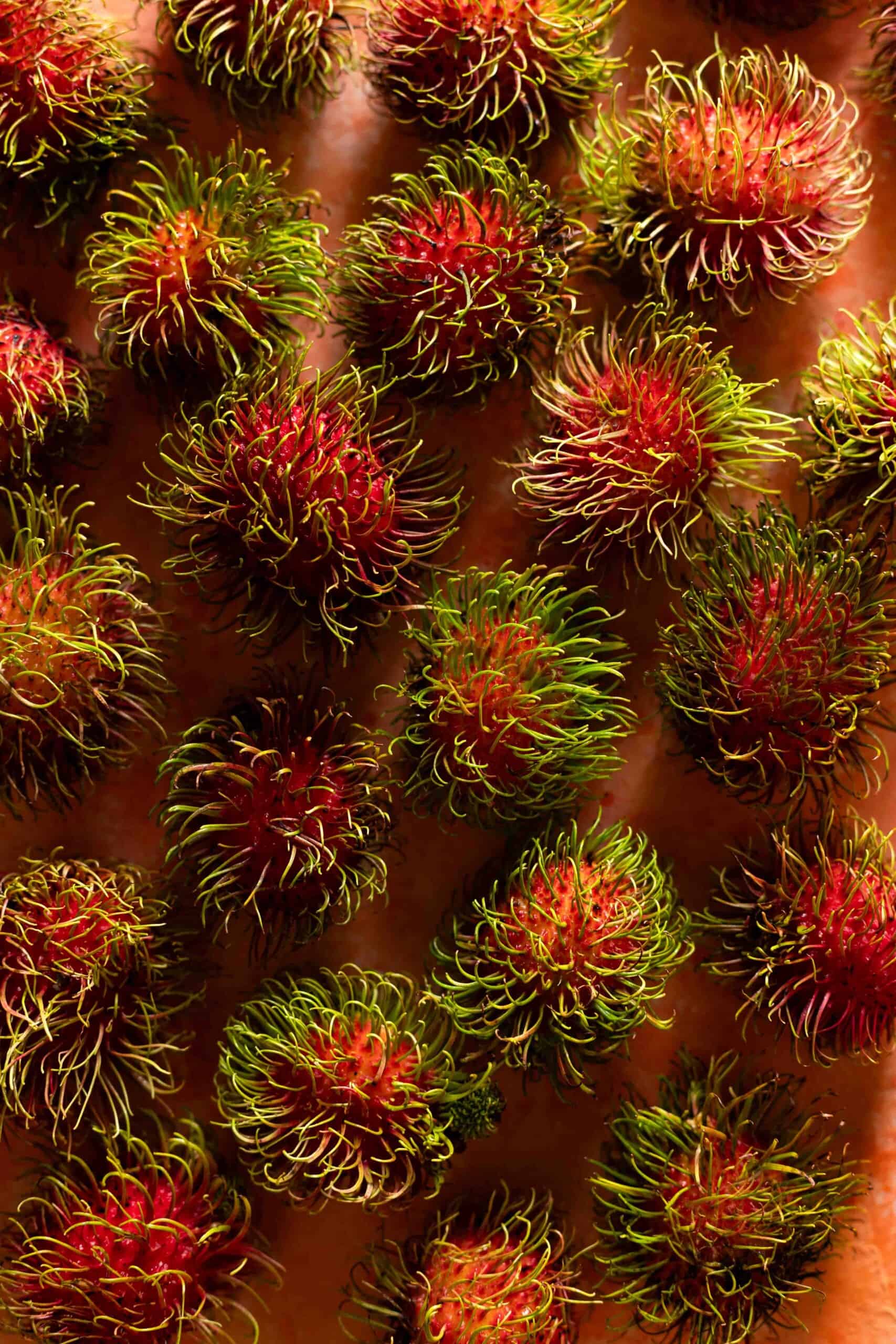
Culinary Uses
Rambutan is a unique and nutritious fruit, often compared to the likes of longan fruit, lychee fruit, and grape due to its sweet and creamy nature. There are many creative uses for rambutan in various recipes, ranging from refreshing fruit salads to delectable desserts.
One delicious way to enjoy rambutan is by incorporating it into a fruit salad. Simply peel the fruit, remove the seed, and mix it with other fruits such as longan, lychee, or even more common fruits like apples or oranges. The combination of flavors, textures, and colorful appearance make rambutan a great addition to any salad.
Incorporating rambutan into desserts is another popular option. Its natural sweetness and creamy texture make it an excellent topping or ingredient in recipes such as ice cream, sorbet, yogurt, smoothies, and fruit-based jellies and jams. You can also use rambutans as a substitute in any recipe that calls for lychees.
Rambutan can also be made into a juice by juicing it in a juice machine or a blender. It can also be made into a simple syrup by simmering it with sugar and water, then straining and adding to sparkling drinks, lemonade, tea, or boba.
For those looking to enjoy rambutan's unique flavor with a bit of savory flare, adding it to curries is a great idea. The fruit can be diced and added to the mix of vegetables and spices for a delightful contrast in flavor profiles. Its subtle sweetness and creamy texture can help to balance out the spiciness of a good curry, while still maintaining the dish's overall richness.
Safety and Precautions
Rambutan is a delicious tropical fruit that is generally safe to eat, but there are a few safety concerns and precautions that you should be aware of before consuming it.
Firstly, while the fruit itself is edible, the outer skin is not. Make sure to remove the skin before eating the rambutan, as it can cause irritation if ingested. This can be done by cutting a slit in the skin and peeling it away from the fruit. It's also crucial to remove the large seed found in the center of the rambutan, as it is inedible and can cause choking if accidentally swallowed.
It's important to be cautious of bacteria that may be present on the rambutan's skin. Thoroughly washing the fruit before peeling it can help reduce the risk of ingesting harmful bacteria. Also, be mindful of the storage conditions to prevent spoilage and potential infections. Store rambutans in a cool, dry place and ensure that they are consumed within a few days of purchase.
Frequently Asked Questions
How to remove rambutan seed and skin?
After removing the rind of the rambutan, you will find the white flesh surrounding a seed. To remove the seed skin, simply use your fingers to gently squeeze and separate the flesh from the seed. You can also use a paring knife to carefully separate them.
How to tell if rambutan is ripe?
A ripe rambutan has a vibrant red, orange, or yellow color with green spines. As the fruit ripens, the spines turn black, but the fruit remains good for a few days. To ensure you are selecting a ripe rambutan, choose one that has a firm texture and rich color.
Where can I buy rambutan?
Look for rambutan in the produce section of your grocery store or supermarket. They’re also available in specialty produce stores, and you can often find them in Chinatown produce stalls.
How long do rambutans last?
Rambutans will only keep for a day or two at room temperature. Wrap them in a breathable plastic bag and refrigerate to preserve them a few days longer,
When is rambutan in season?
Rambutan is a seasonal fruit, and its availability depends on the location and climate. In general, rambutan is in season during the summer months, from May to September. However, the exact season can vary depending on the location and growing conditions. For example, in Hawaii, rambutan is typically in season from May to August, while in Indonesia, the season can start as early as March and last until November.
Is rambutan lychee?
Rambutan and lychee are both unique fruits from the soapberry family (Sapindaceae). Their inner fruits share a similar appearance and they are eaten in similar ways after removing the outer skin.
While both fruits have bumpy pinkish-red skin, rambutan also has flexible, electric orange and green hairs, lychee does not. Lychees are also about half the size of rambutans and they both have distinct flavors. Rambutan is sweet, tart, and creamy, while lychee flesh tends to be both crisper and brighter with a floral taste. Read more on Rambutan vs Lychee here.
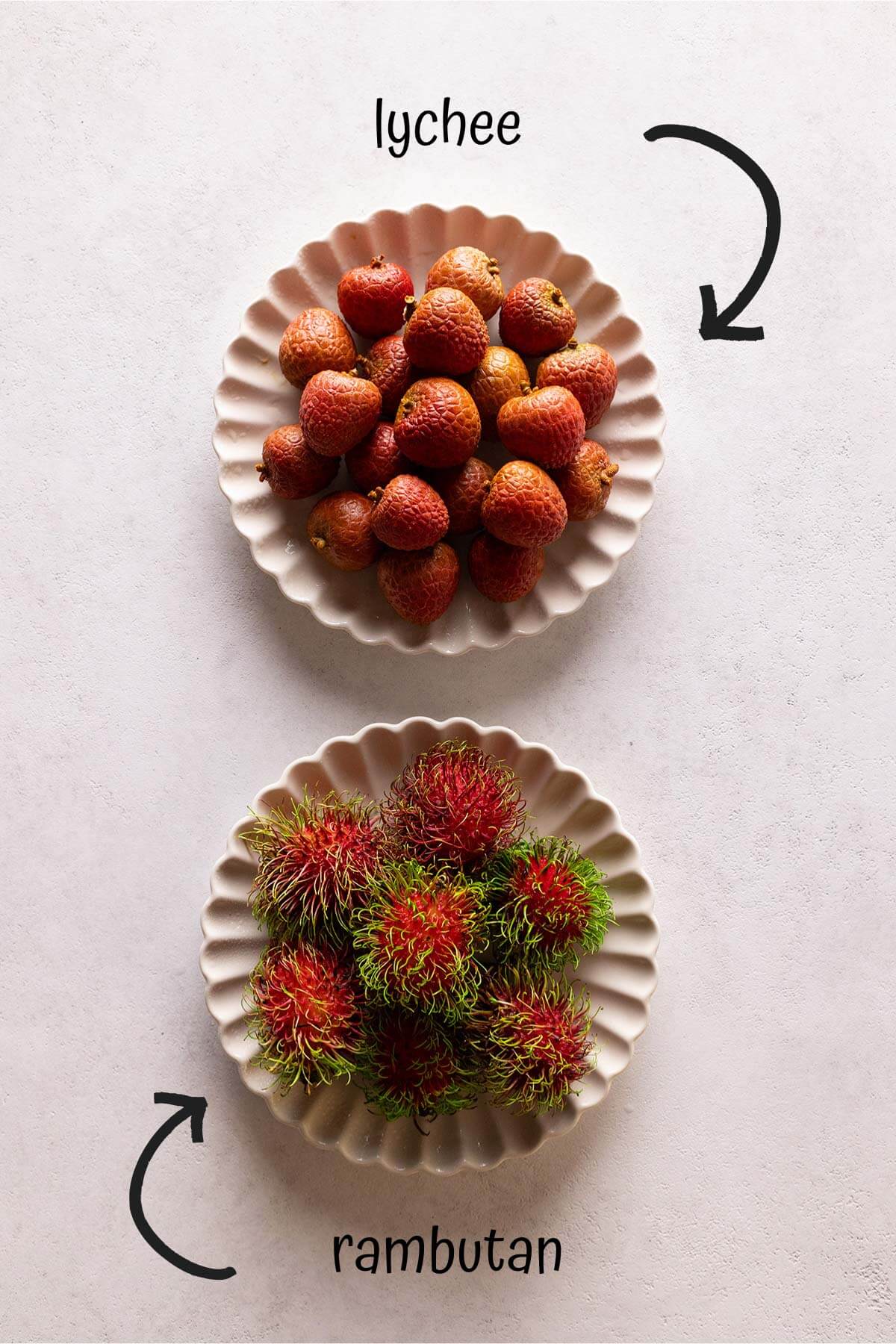


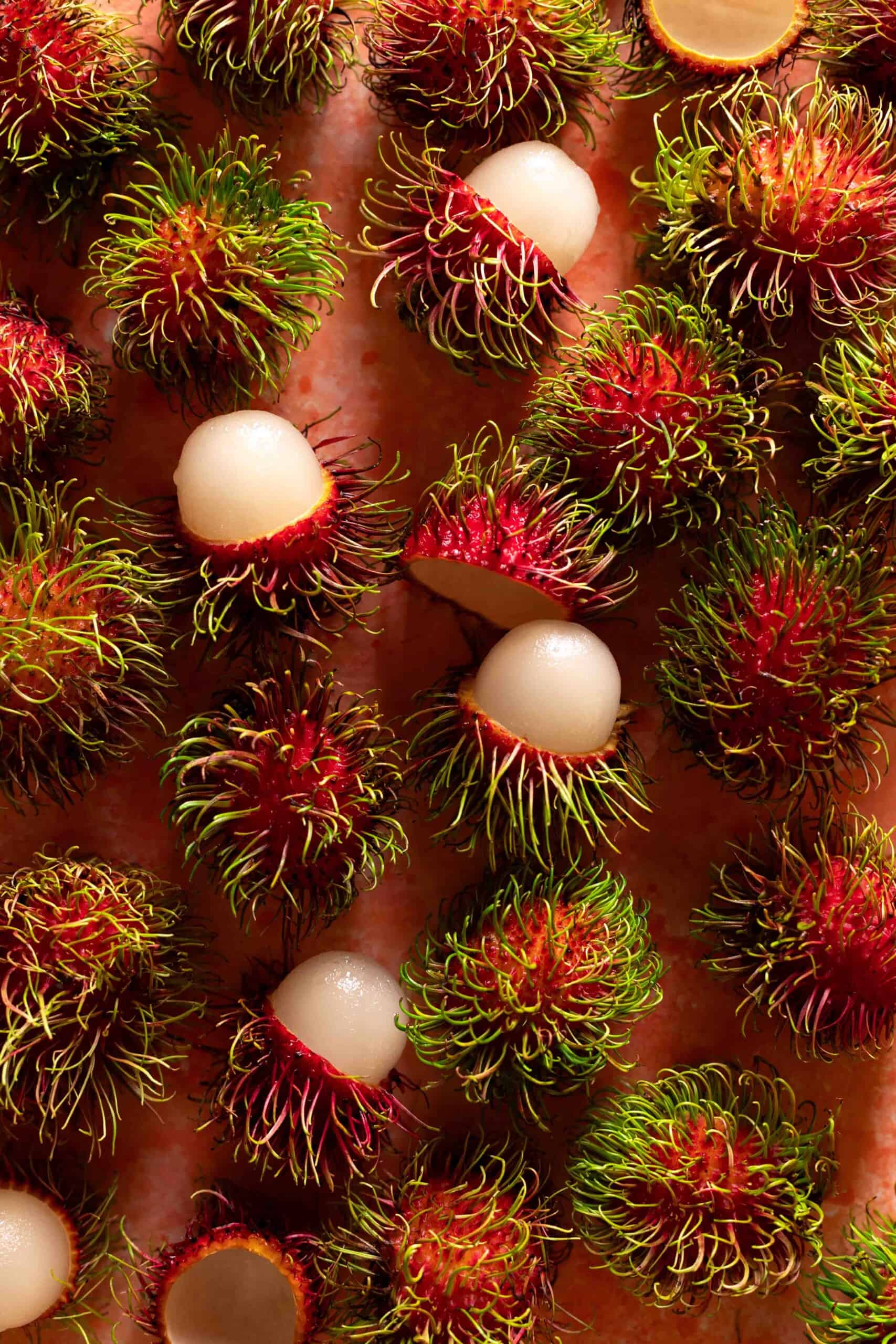

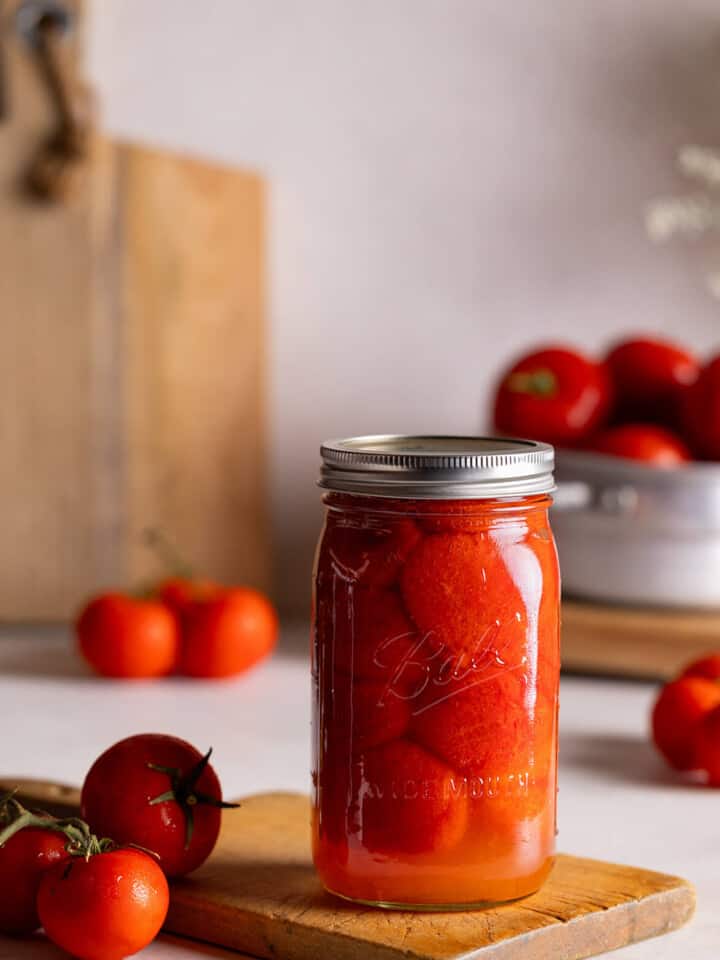
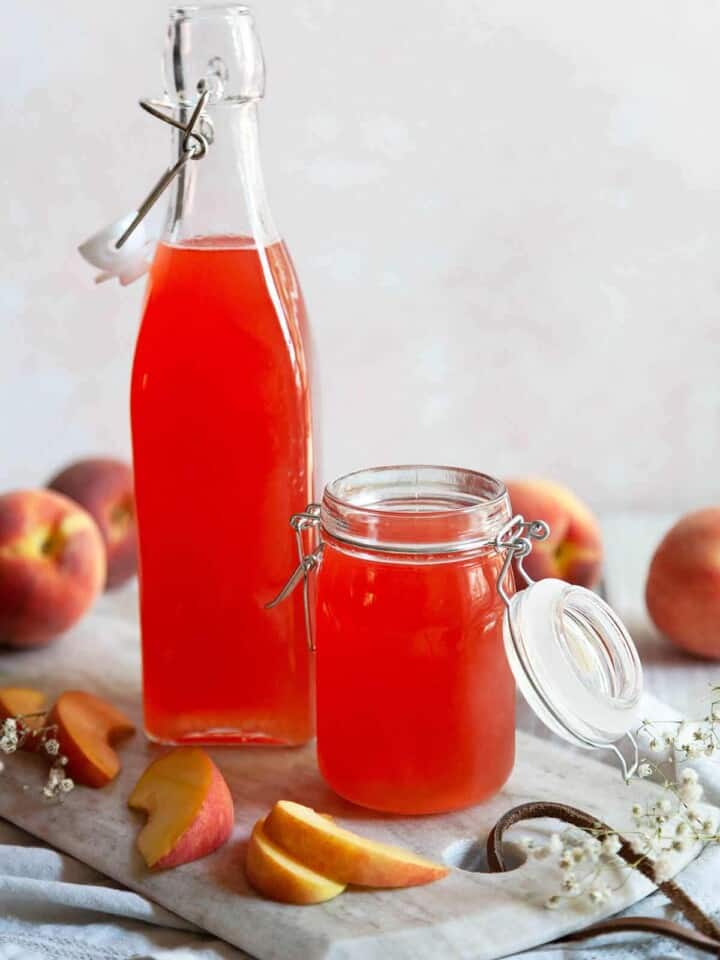
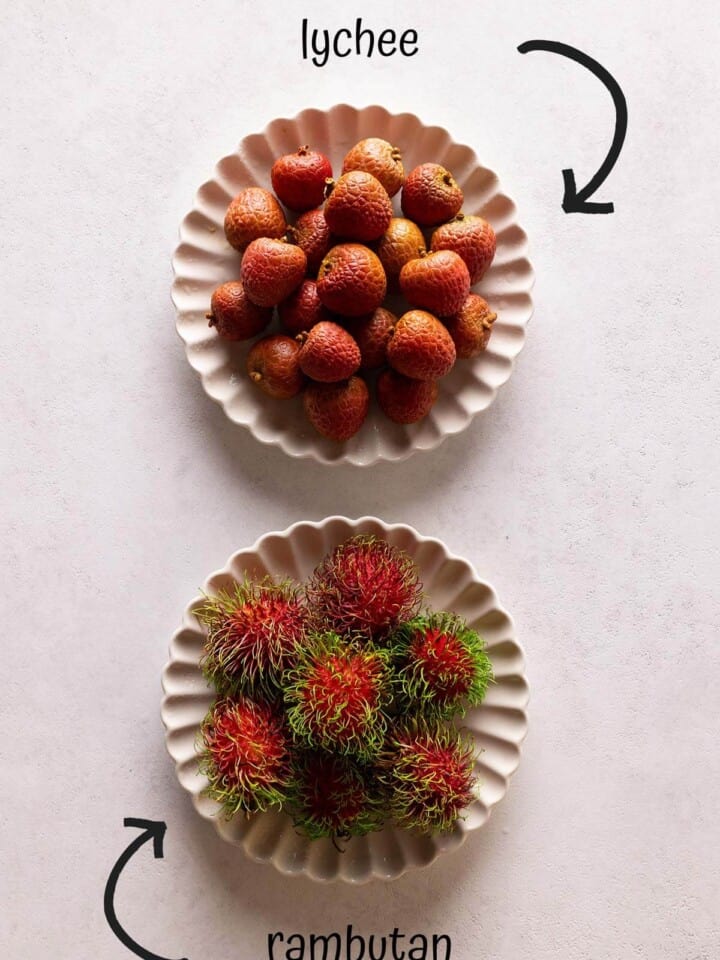
Karen (Back Road Journal)
I've seen photos of this exotic fruit but have never come across it in any of our markets.
Kelly
Hi Karen, I find it in the local Asian market. It looks a little intimidating at first so it was really fun trying it!